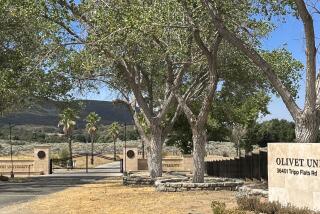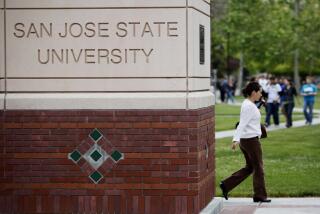How did a study about struggling community college students lead to a state investigation?

A San Diego State study that concluded that many California community college students are struggling to find adequate food and shelter has been overshadowed a bit by the angry response it apparently elicited from an employee of the state Department of Education.
On Monday, after co-author and SDSU professor J. Luke Wood sent the study around for feedback, he said he got a reply from Thomas Pacheco, who works for the California Department of Education’s charter school division, that dismissed the study with an obscenity.
On Tuesday morning, as the Fresno Bee first reported, Wood posted a screenshot of the email on Twitter and asked of Tom Torlakson, the state superintendent of public instruction, “This person is making ed policy decisions in CA?”
That afternoon, the Department of Education also took to Twitter, writing that an employee “has been allegedly sending out inappropriate emails” and that the agency is “investigating & taking immediate action.”
Spokesman Bill Ainsworth declined to provide details, saying it was a “personnel matter” and therefore was private.
“These emails in no way reflect the views of the California Department of Education,” he said. “We expect CDE employees to conduct themselves using the highest professional standards.”
Wood’s tweet drew plenty of attention. On Wednesday, he tried to focus that spotlight back on the study itself.
“I was very surprised and saddened,” he said about the email he received, “but at the same time, more saddened by the challenges that we found in the report, so I had to put it in perspective.”
The study, which surveyed 3,647 community college students at seven schools statewide, concludes that about one-third of community college students experience housing insecurity and 12.2% experience food insecurity.
African American and Southeast Asian students — and multiethnic women — were more likely to be affected, the study found. These struggling students reported feeling less confident in the value of college and their ability to succeed there, and a higher proportion of them were in remedial education classes.
The report defined food insecurity as “the limited or uncertain availability of nutritionally adequate and safe foods, or the ability to acquire such foods in socially acceptable ways.” It defined housing insecurity as “unaffordable housing, poor housing quality, crowding, and frequent moves” in addition to homelessness.
To help students, the report recommended raising awareness among college leaders, reducing tuition and fees, making it easier to access financial aid and having comprehensive plans for addressing poverty.
A recent California State University study suggested that 1 in 10 CSU students may struggle to find stable housing.
You can reach Joy Resmovits on Twitter @Joy_Resmovits and by email at [email protected].
UPDATES:
Dec. 8, 1:18 p.m.: The photograph on this article has been replaced.
This article was originally published at 5:45 p.m. on December 7.
More to Read
Sign up for Essential California
The most important California stories and recommendations in your inbox every morning.
You may occasionally receive promotional content from the Los Angeles Times.











